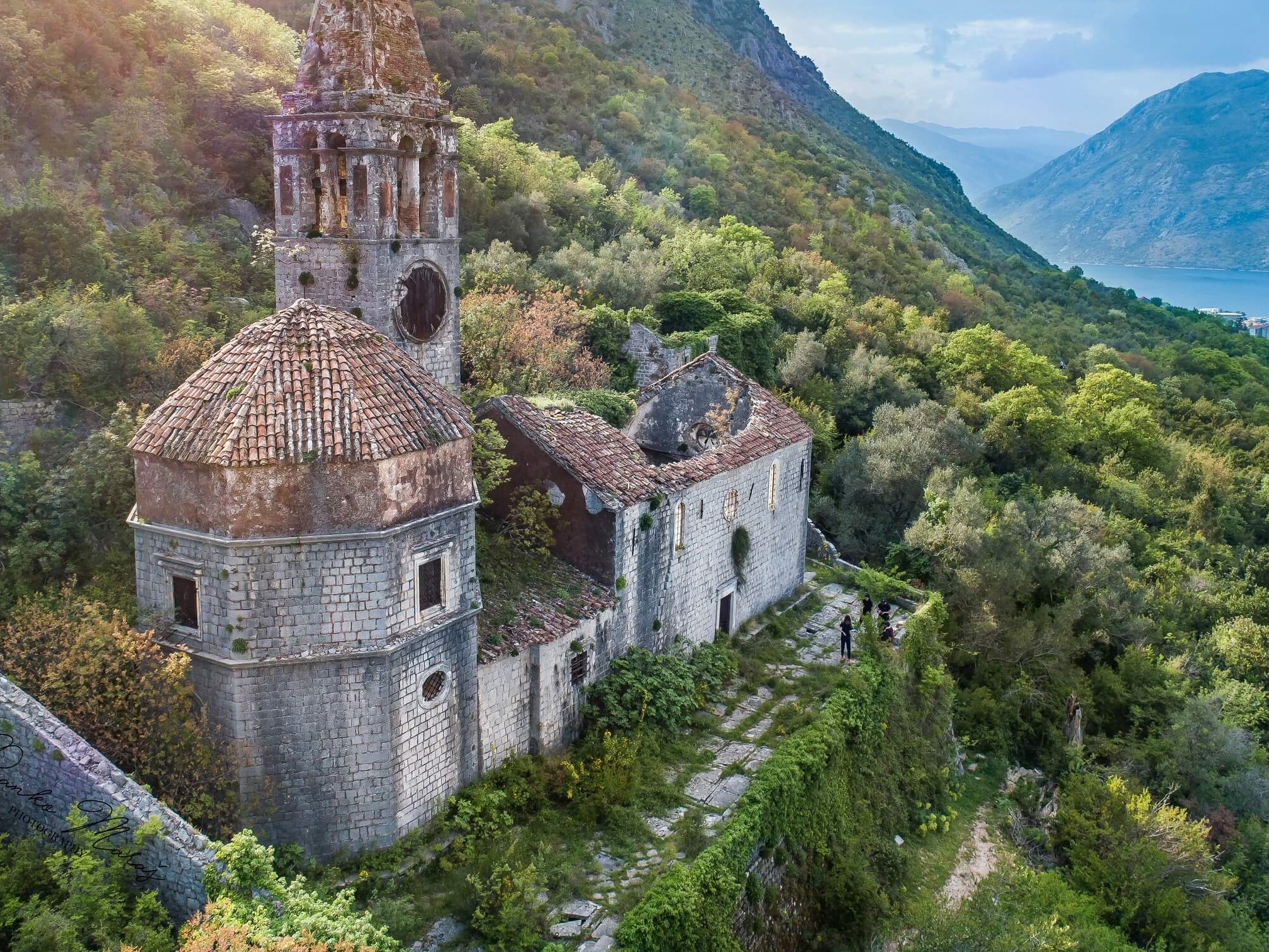Ideal climate at the foot of Mount Vrmac
Specific topographic position enables the mixing of the marine and mountain air, a confirmed natural treatment factor in Prčanj for more than one century
Driving along the coast, one reaches a famous settlement called PRČANJ (1 128 inhabitants), which has “grown together” with Lower Stoliv for the reason of intensive construction activity. Formerly, just like in the case of other settlements in Kotors – Risan Bay, Prčanj had had the character of a linear settlement, with the houses mainly placed in one line. The Church of St. Thomas the Apostle from the 10th century falls among the oldest monuments of culture. It is located in the upper part of the settlement, currently in ruinous condition and seriously endangered. The “Three Sisters” Palace (commonly known as “Tre sorelle”), is the only preserved 15th century suburban villa in this area, the property of Buća family. It is associated with the legend of unfulfilled love of the three sisters in love with the same sea captain. This legend may not be a legend, but a true story resembling a legend. Living separately in their respective parts of the Palace, the sisters kept their secret. Thus, time was passing and they lived in hope that one day their love would be requited. Years were catching up with them and they were dying one after the other, walling in each other’s window. When the third sister died, there was no one to wall her window in. The windows “testified”, therefore that the legend might not be a legend after all, but a real-life story. Just as it is a reality that the new owner was somehow bothered by the walled-in windows, so they are not walled in any more, eliminating, thus the “proof” of the content of the legend.
Prčanj, just like many other settlements on the shores of Kotor – Risan Bay, based its economic prosperity on maritime activities, more precisely on marine shipping, only to reach its height in the 18th century. Thanks to its fast ships and skilled seamen, they gained the trust of Venice, and as of the beginning of the 17th century started transporting post from and to Venice, establishing thus the first regular postal service along the eastern coast of the Adriatic Sea. Among its numerous primacies, there is one more primacy that belongs to Prčanj. Namely, it is the birthplace to Ivo Visin (1806), a sea captain, the first South Slav who circumnavigated the world with its sailing ship “Splendido”, sailing for commercial purposes. He first sailed around the Cape Horn, which was unusual for sailing ships due to unfavourable wind direction. His journey around the world lasted from 1852 to 1859. For this undertaking, decorated with a flag of honour “Merito navali” by the Austrian Emperor Franz Josef, the greatest Austrian maritime decoration ever awarded. Prčanj gave numerous scientific workers, artists, sea captains, medical doctors, musicians, politicians, priests and bishops, who have left deep traces in the history of this settlement, and beyond.
The Church of St. Nicholas, erected around 1730, on the seashore, with the Franciscan Monastery, spacious and well-known courtyard, where on 13th June 1848, People’s Assembly of Boka Kotorska champions was held, under the spiritual patronage of Njegoš. At the Assembly, the decision was made on the unification of South Slavic lands within Austrian boundaries in one state union. This meant the beginning of maturing of Yugoslav statehood idea, which actually came to life a lot later. In the Monastery, during the 18th and the 19th century, private elementary and maritime schools were active. However, the earthquake in 1979 damaged considerably the Franciscan Monastery and its facilities, as well as the church.
The most monumental edifice is the parish church dedicated to the Nativity of the Mother of God, built in the Renaissance-Baroque style, according to the design of the Venetian 18th century architect, Bernardino Macaruzzi. Space-wise this is the largest church in Boka Kotorska Bay. The church’s interior is one of biggest pinacotheca in this area. Beside the paintings of the well-known masters like Ivan Meštrović and Tripo Kokolja, special attraction is the icon of the Mother of God on wood, on the main altar, the work of the Venetian School of the second half of the 14th century. Apart from precious liturgical objects and jewellery made of silver, it also stores the white silk flag of “Merito navali” awarded to captain Ivo Visin for his undertaking.



